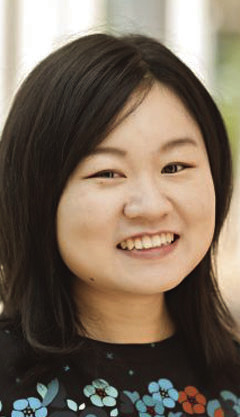Mengying Liu, assistant professor of engineering at Washington and Lee University, recently published an article in the latest edition of the peer-reviewed journal Science Advances.
The paper, “Role of slip in hydrogenassisted crack initiation in Ni-base alloy 725” is based on Liu’s doctoral thesis work at Texas A&M University. She is the first and corresponding author of the article, co-authored by the chair of her doctoral thesis committee, Michael J. Demkowicz, and fellow TAMU doctoral student Lai Jiang. The article’s experimental works and preliminary analysis were conducted at Texas A&M, with Liu providing further data analysis and manuscript preparation and revision while at W&L.
“With in situ test in Scanning Electron Microscope (SEM), not only can we capture the moment when the crack initiates but later use these SEM images from beginning to end for quantitative analysis,” said Liu.
The experiments, which involved situ tensile straining in SEM, investigated the role of hydrogen and slip in crack initiation in the nickel-based alloy 725 – a corrosion-resistant, high-strength alloy. The research revealed no tendency for hydrogen to enhance localized slip and no necessity of slip for crack initiation.
This information is essential because when metallic materials are exposed to a hydrogenrich environment, they can lose their ductility and undergo sudden and unexpected brittle-type failure. Prior research observed cracks along slip bands, but inferred the role of slip in crack initiation only after cracks had already propagated. Whether the slip causes crack initiation or the initiation causes slip, or if colocation is merely incidental, remains unknown. Liu and her research team used their experimental data to answer previously unknown questions that can provide reliable lifetime predictions of components operating in hydrogen-rich environments and for the development of novel hydrogen embrittlement- resistant alloys.
“It’s been a long journey since we started our first experiment in 2019,” said Liu. “After seeing the first crack not initiate at the location with the highest localized slip, quantitatively, we did intensive quantitative analysis of all these slips, before and after we observe cracks, with various hydrogen content.”
Liu’s work is supported by W&L through the Summer Lenfest Grant and the Class of 1956 Provost’s Faculty Development Endowment.
Liu has been a member of the W&L faculty since graduating from Texas A&M with a Doctor of Philosophy in 2021. She also holds a Bachelor of Engineering from Tianjin University (China).



